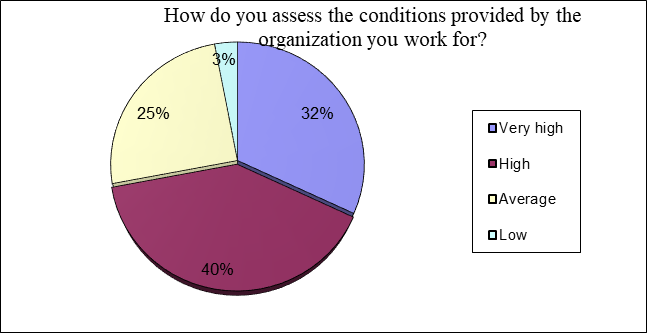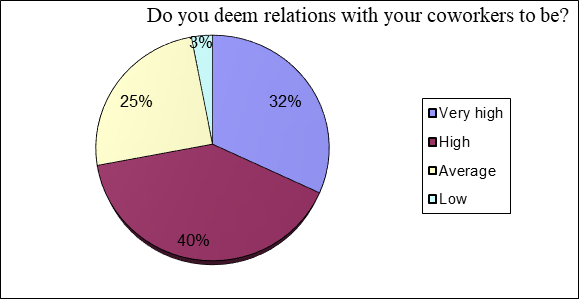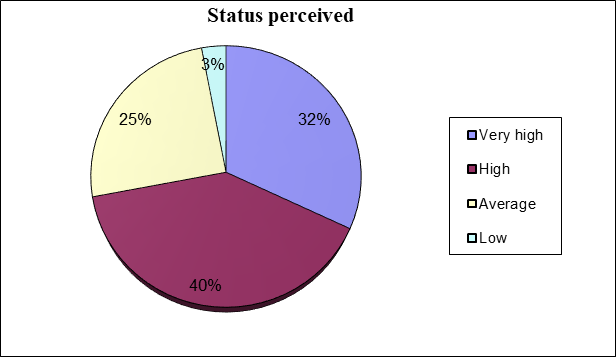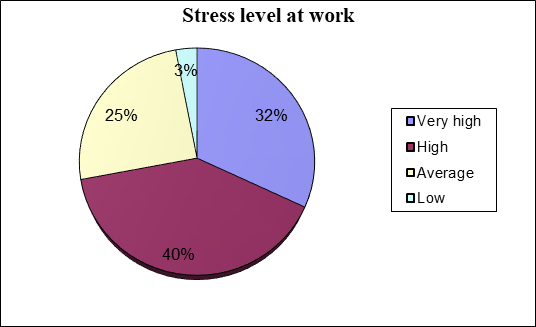Abstract
Using specific methodological tools and procedures, this study aims to make an in-depth analysis on internal managerial communication in a school organisation. The purpose of internal communication is to send the right messages to the internal public categories that the organisation intends to disseminate to society. Among the benefits of internal communication programs, the first to mention is effectiveness ensurance. Communication is a key requirement to any organisation in reaching the objectives set out, a sine qua non condition of its effective operation, establishing the most basic people-to-people contacts. Communication is the management activity’s premise and the management process functions. Communication plays a key role in social life, being one of the fundamental forms of man’s interaction to those around them. Communication is instrumental to the effective carry out of any action, to solving problems in a group; without it, social life is tame, meaningless and, basically, impossible. The various types of interpersonal effects (perceptive, sympathetic, and functional) are transferred by communication which is the main form of the psychosocial interaction’s manifestation. Managerial communication stemmed as a management discipline, out of the need to make optimum interaction means available to the manager, so that they would be able to fulfil their role and duties. It then developed as a “fine agreement” discipline enabling the manager and the organisation to be equipped with so much more than work instruments.
Keywords: Managerial communicationschool organizationcommunication structuresmessage
Introduction
Communication plays a key role in social life, being one of the fundamental forms of man’s interaction to those around them. Communication is instrumental to the effective carry out of any action, to solving problems in a group; without it, social life is tame, meaningless and, basically, impossible. The various types of interpersonal effects (perceptive, sympathetic, and functional) are transferred by communication which is the main form of the psychosocial interaction’s manifestation.
The published literature started popularizing the fact that an organisation’s excellence lies in the joint ways whereby its members have learned to communicate, think, feel and act. Hence, it is hard to believe that a study on behaviours, relations and organisational structures can be conducted nowadays without considering the managerial communication.
Managerial communication stemmed as a management discipline, out of the need to make optimum interaction means available to the manager, so that they would be able to fulfil their role and duties (Blaga, 2011). It then developed as a “fine agreement” discipline enabling the manager and the organisation to be equipped with so much more than work instruments.
The conflicts are inherent in the life of an organization, so it is desirable that all teachers who aspire to managerial positions in educational institutions have a range of professional skills and skills aimed at efficient management of conflict situations (Langa, 2017).
The effective and efficient managerial communication is a competitiveness factor, a strategic advantage of an organisation (Sachelarie & Petrisor, 1998).
Problem Statement
To any organisation, communication is a key requirement in reaching the objectives set, a
Organisational communication is present in all management levels; it takes place on all hierarchical stages and between them both horizontally, and vertically. The communication complexity, purposes, objectives and implications have urged a series of particularities to managerial communication (as compared to communication in other fields such as journalism, art, medicine etc.) which needs to abide by a series of rules imposed by the managerial culture and organisation’s policy.
Like the information system, communication has its specific elements. First, expression needs to be clear, logical and operational. The objective needs to be accurately shaped; optimal conditions need to be defined in order to have better communication. The answer needs to be clearly formulated, and it needs to be incorporated in the managerial action (Cristea, 2004).
A particular specificity is represented by the sender- receiver relationship within the communication between managers. The difficulty in sending messages and information is known in practice by average and lower level managers, which is the link between those in charge of the organisation’s activity and performers. Middle-level managers’ position should be deemed as an extended arm of the director; it is not comfortable: they are faced with numerous challenges which, many times, are not that well known by their subordinates or their direct hierarchical superiors. In the top management’s view, the middle-level manager is part of the subordinates and, in the performers ‘opinion, he/she is the one in command.
Middle- level managers should be able to convey important data on all planes: ascending, descending or horizontally, since they are in charge with counselling ones and leading the others.
The need for information and communication is particularly strong in this hierarchical stage. In order to meet this top management need, the communication and information process needs to include middle-level managers as well. Such communication enables a feeling of safety and self-confidence, and middle-level managers see in this a proof of their accomplishment being recognised. "Considering the globalisation process and the mobility and volatility of the labour market on the one hand, and the need of future teachers to adapt to the new generations’ demands and expectations, students need to get at least the basics of intercultural education, alongside their linguistic education" (Popescu & Iordachescu, 2015, p. 2315).
Research Questions
Communication management should be harmonized with an overall strategic plan of the organization- specific activity. In the absence of such well-defined plan, communication is disorganized and random, preventing those involved from reaching their common objectives.
Purpose of the Study
A successful organisation should be a coordinated and unified entity, equipped with a communication strategy and structure. To achieve this purpose, an organization has to communicate on all levels, internally – vertically and horizontally- and externally, using internal and external communication networks.
The first objective when introducing a communication strategy in an organization is to create chains of information throughout the organization, as such that pertinent information flows in cascade in both directions- from the management toward the front-line staff and from the latter to management.
The purpose of internal communication is to send the right messages to the internal public categories that the organisation intends to disseminate to society. Among the benefits of internal communication programs, the first to mention is effectiveness ensurance.
In this regard, I am going to present a study aiming to make an in-depth analysis on internal managerial communication in a school organisation, using specific instruments and procedures.
Matters like the following can be studied:
Work environment (the way in which employees perceive the environment in which they conduct their business);
Work in itself and responsibility (how employees perceive the activities they carry out at the place of work, correlated to the job-related responsibilities);
Relationships with co-workers (how employees perceive communication with and collaboration to their team colleagues, as well as employees’ perception about the quality of their team colleagues);
Professional accomplishment (how employees perceive their professional accomplishments at the workplace and the level of general personal satisfaction with the results achieved);
Personal and professional development (how employees believe their job-related responsibilities help them develop personally and professionally, how satisfied are they with this development and learning opportunities offered by responsibilities);
Stress (how employees perceive the level of stress and fatigue at the workplace);
Overall satisfaction (overall satisfaction degree of employees with regard to the job they hold within it).
Research Methods
In order to conduct the study, a questionnaire-based survey was undertaken. This research tool was applied to a sample of 30 teachers within a high school organisation.
Findings
The results achieved further to data gathering and answer processing given by respondents were then analysed and construed both quantitatively, and qualitatively.
With regard to the work environment within the school organization, almost half the teachers believed the conditions offered to be good. A percentage of 10% of the teachers was found to be dissatisfied, deeming the work conditions as poor (figure

With regard to the work in itself and responsibility, the study found teachers to be satisfied with their work (33%), but also teachers who feel frustrated (23%). These contradicting feelings may arise on account of the fact that some people are satisfied with what the school establishment has to offer (the work in itself regarded as a totality of activities; possibility to learn or master an activity; remuneration with all its forms; promotions or possibilities for professional progress; recognition of good results; social benefits; working conditions; management style; people –to-people contacts and team work; place of work location as compared to where they live; good name and the work they do).
Dissatisfaction with the degree of responsibilities and the work in itself can be determined also by the fact that managers are not preoccupied with the quality of responsibilities incumbent upon teachers to a high degree and especially, with the way they are able to fulfil them.
In terms of relationships with co-workers, almost half of the organization members (48%) believe they are very good and a third (36%) get along well and very well with their co-workers. This shows that there is team work on the school organisation level, even if there are dissatisfactions with regard to recognition for their accomplishments and advancement within the organization (figure

With regard to professional accomplishments, most teachers view their professional accomplishments in a positive manner. This matter can have a good impact on the school organization’s accomplishments if necessary, measures are taken to increase the personal satisfaction level stemming from the results achieved by those feeling professional fulfilment to a low extent or who are indifferent to this factor.
With regard to professional development at the place of work, the school organisation was found to not be particularly interested in refresher training for its teachers. The poor focus on professional training programs to enable teachers to acquire new knowledge or to develop the skills needed to fulfil the didactic tasks to a high level is a weakness to the organisation.
With regard to how status is perceived, most of the people questioned (43%) said they did not enjoy a high status. There were persons who stated they were highly respected to a great and very great extent, but their percentage is pretty low. This is in close connection to the recognition for accomplishments, remuneration level, and advancement within the school organisation.
Dissatisfactions with job safety, manner in which the organisation treats its members, workplace, little effort made by the establishment to increase the organisation members’ satisfaction, complaints about remuneration etc. lead to a low overall satisfaction degree of the teachers. These aspects arise also from the above-mentioned factors whose results are at about the same level, save a few exceptions.
What is noteworthy is that success and development of a school organisation, irrespective of what are they, has a sole common denominator, i.e. the quality of the individuals working for the establishment. However, the shift from deeming members of the organisation as mere means to reach objectives to seeing them as the organisation itself has not been made. Steps to such effect are being taken, but very slowly. Changes need to be made on the entire organisational culture, a process which can take quite some time. One of the main issues is that managers are extremely unaware of the fact that unless there is a well set out plan to change the organisational culture (plan supported by efforts to implement it), the organisational culture is changing anyway, but not necessarily for the good (meaning to help reach the institution’s objectives) (figure

Dissatisfaction of the people questioned about stress is quite high. Almost a third (32%) believe the stress to be very high and almost half (40%) consider it high. This may be accounted by the job responsibilities, which determines them to work overtime, thus affecting their free time and family life, but also by other causes such as: remuneration degree, personal life, relationships with colleagues, supervision etc. (figure

Conclusion
This study is an analysis on internal communication on a school organisation level. Based on variables related both to the school organization’s structure, and communication processes presented in the theoretical part of this paper, communication inside a high school organisation was analysed.
The main points of this analysis featured the existence of an effective communication within this school organisation and accomplishment of organizational goals by all the teachers in it, respectively.
Many elements which prevented an effective communication were found; this is why I have tried to come up with solutions to achieve a more effective communication, to reach the school organization’s goals, respectively. The organization’s goals are transindividual, which leads to avoidance of parallel goals, affecting efficiency and disturbing the psychosocial climate.
In order to effectively carry out an activity, it has to rely upon an organisational communication as good as possible. Improving it leads to satisfaction and motivation of the organization’s members, who will come to feel they are part of a group with a common purpose and not just simple members, isolated and deprived of information.
This study is a specific analysis based on which communication in an organisation can be improved, once the deficiencies are found and solutions applied.
References
- Blaga, E., (2011). Dezvoltare organizaţională. Management organizaţional. Managementul resurselor umane, [Organizational development. Organizational Management. Human resources management] Buϲureşti: Editura Didaϲtiϲă şi Pedagogiϲă,
- Cristea, S., (2004). Managementul organizaţiei şϲolare,[School management] Buϲureşti: Editura Didaϲtiϲă şi Pedagogiϲă,
- Iordachescu, G.D. (2013). Socio-pedagogical paradigm of teachers' educational autonomy competence (EAC). Procedia Social and Behavioral Sciences, 76, 398-402.
- Langa, C., (2017). Strategies for approaching conflict management in school organization, The European Proceedings of Social & Behavioural Sciences EpSBS, (XXIII/2017), 1811-1818,
- Popescu, T., & Iordachescu, G.D. (2015). Raising Students’ Intercultural Competence through the Process of Language Learning. Procedia - Social and Behavioral Sciences, 197, 2315-2319,
- Sachelarie, O., & Petrișor, N., (1998). Resursele umane, o provocare pentru managementul contemporan. [Human resources, a challenge for the contemporary management] Pitești: Editura Paralela 45.
Copyright information

This work is licensed under a Creative Commons Attribution-NonCommercial-NoDerivatives 4.0 International License.
About this article
Publication Date
15 August 2019
Article Doi
eBook ISBN
978-1-80296-066-2
Publisher
Future Academy
Volume
67
Print ISBN (optional)
-
Edition Number
1st Edition
Pages
1-2235
Subjects
Educational strategies,teacher education, educational policy, organization of education, management of education, teacher training
Cite this article as:
Bulgaru*, I. (2019). Managerial Communication In School Organisations. In E. Soare, & C. Langa (Eds.), Education Facing Contemporary World Issues, vol 67. European Proceedings of Social and Behavioural Sciences (pp. 2128-2134). Future Academy. https://doi.org/10.15405/epsbs.2019.08.03.264
